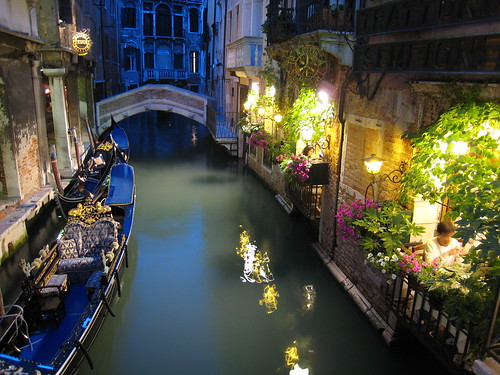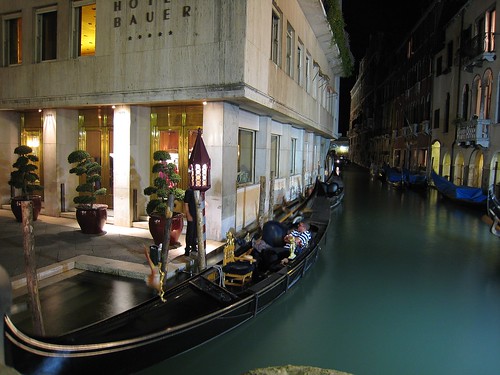flyingcheesehead
Touchdown! Greaser!
I'm thinking of moving up... I've done some reading and perused the previous camera threads on PoA:
http://www.pilotsofamerica.com/forum/showthread.php?t=1243
http://www.pilotsofamerica.com/forum/showthread.php?t=16201
http://www.pilotsofamerica.com/forum/showthread.php?t=23799
What precipitated this was one of the many neat things that happened to me at OSH this year. When I was about to go up in the tower, I thought "Gee, I should probably take a still camera as well as the video camera." Unfortunately, my "PHD" Nikon crapped out on the last day of my big adventure last summer, so I haven't had a still cam other than my iPhone since then. Well, near the base of the tower at OSH is a Canon booth where they let anyone walk up and borrow a camera for the day (while supplies last, of course) - Bring it back by 5, stop by tomorrow for a DVD of your pictures. (GREAT marketing, BTW!) Well, I asked if there was any way I could keep a camera 'til 6, because "I'm sorry, I'm not coming out of the tower just to bring your camera back."
 They hemmed and hawed, said "No, not really..." and then spotted the media badge. "Oh. You go to the side door."
They hemmed and hawed, said "No, not really..." and then spotted the media badge. "Oh. You go to the side door."
Well, to shorten the rest of the story - I walked back out of there with a Canon EOS-1 Ds Mark III and a pair of very nice lenses. (For the unfamiliar: That's a 21-megapixel full-frame digital SLR, and one of these
 plus another lens.)
plus another lens.)
I knew it was way more camera than I really had any business even touching, and I'm glad I didn't find out until I got back that I was lugging around ELEVEN THOUSAND DOLLARS worth of camera gear. While I really didn't know what I was doing with such a high-end camera, I was able to get WAY better pictures than I've ever dreamed of before. So, now I'm looking to move up to a camera I can grow into.
While I really didn't know what I was doing with such a high-end camera, I was able to get WAY better pictures than I've ever dreamed of before. So, now I'm looking to move up to a camera I can grow into.
So far, I'm mostly deciding whether to start with the 50D, or to splurge for the 5D Mark II. (I liked Canon's stuff, and I really like what they do at OSH and the fact that they've supported Airventure for a long time.) I also want to know what lenses I should be looking at. I like the flexibility of the EF 28-300mm f/3.5-5.6L IS USM but it's a bit on the large and pricey side. Would it be better to get an EF 24-105mm f/4L IS USM and an EF 100-400mm f/4.5-5.6L IS USM instead?
Are there any resources online for learning about the pros and cons, ins and outs of various types/lines of cameras and lenses, what features to look for, etc?
I'm also interested in suggestions on other stuff - Tripods, whether the EyeFi cards are any good, thoughts on geotagging...
http://www.pilotsofamerica.com/forum/showthread.php?t=1243
http://www.pilotsofamerica.com/forum/showthread.php?t=16201
http://www.pilotsofamerica.com/forum/showthread.php?t=23799
What precipitated this was one of the many neat things that happened to me at OSH this year. When I was about to go up in the tower, I thought "Gee, I should probably take a still camera as well as the video camera." Unfortunately, my "PHD" Nikon crapped out on the last day of my big adventure last summer, so I haven't had a still cam other than my iPhone since then. Well, near the base of the tower at OSH is a Canon booth where they let anyone walk up and borrow a camera for the day (while supplies last, of course) - Bring it back by 5, stop by tomorrow for a DVD of your pictures. (GREAT marketing, BTW!) Well, I asked if there was any way I could keep a camera 'til 6, because "I'm sorry, I'm not coming out of the tower just to bring your camera back."

Well, to shorten the rest of the story - I walked back out of there with a Canon EOS-1 Ds Mark III and a pair of very nice lenses. (For the unfamiliar: That's a 21-megapixel full-frame digital SLR, and one of these

I knew it was way more camera than I really had any business even touching, and I'm glad I didn't find out until I got back that I was lugging around ELEVEN THOUSAND DOLLARS worth of camera gear.
 While I really didn't know what I was doing with such a high-end camera, I was able to get WAY better pictures than I've ever dreamed of before. So, now I'm looking to move up to a camera I can grow into.
While I really didn't know what I was doing with such a high-end camera, I was able to get WAY better pictures than I've ever dreamed of before. So, now I'm looking to move up to a camera I can grow into. So far, I'm mostly deciding whether to start with the 50D, or to splurge for the 5D Mark II. (I liked Canon's stuff, and I really like what they do at OSH and the fact that they've supported Airventure for a long time.) I also want to know what lenses I should be looking at. I like the flexibility of the EF 28-300mm f/3.5-5.6L IS USM but it's a bit on the large and pricey side. Would it be better to get an EF 24-105mm f/4L IS USM and an EF 100-400mm f/4.5-5.6L IS USM instead?
Are there any resources online for learning about the pros and cons, ins and outs of various types/lines of cameras and lenses, what features to look for, etc?
I'm also interested in suggestions on other stuff - Tripods, whether the EyeFi cards are any good, thoughts on geotagging...
Last edited:













